Construct Models
MBS models can be created interactively in MotionView using its easy to use interface.
Add an Entity
- Click on the
icon in the Ribbon to bring up the Add “Entity” dialog.Attention: Points, Vectors, Joints, and Bushings are added using the guide bar in the modeling window (not the Add "Entity" dialog).
- Enter a Label and Variable for the entity.
- Click OK to add the entity and close the dialog.Tip: Click Apply to add the entity while retaining the dialog to add additional entities.
It is recommended to provide a meaningful Variable name (varname) to entities. Entities are identified and referenced through their variable names.
Edit an Entity
An entity can be selected by clicking on the entity in the browser or by clicking on the entity graphics (if available) in the modeling window.

- Real, Integer, String data
- File reference
- Drop-down option
- Entity reference

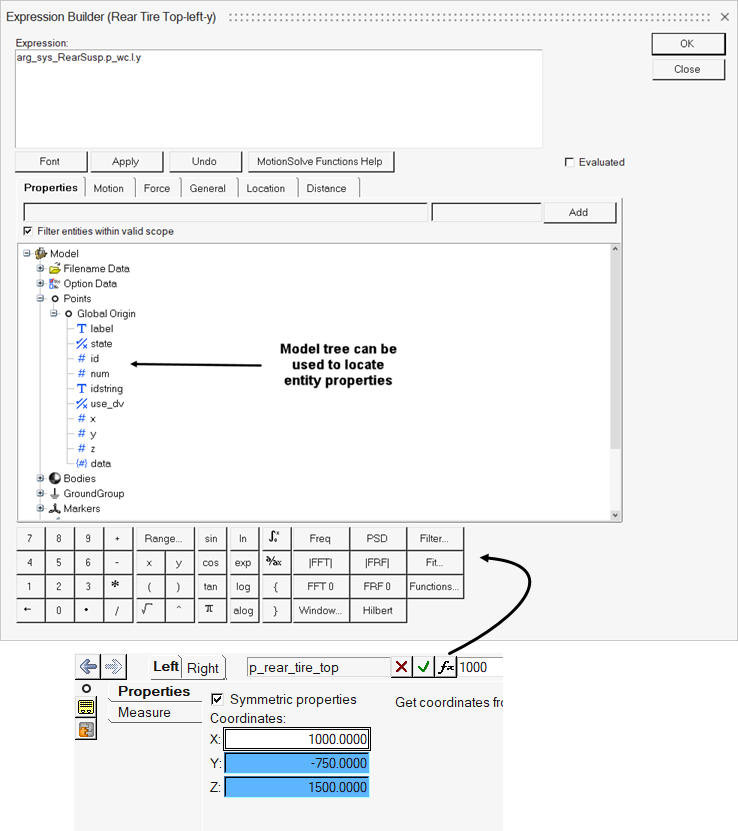
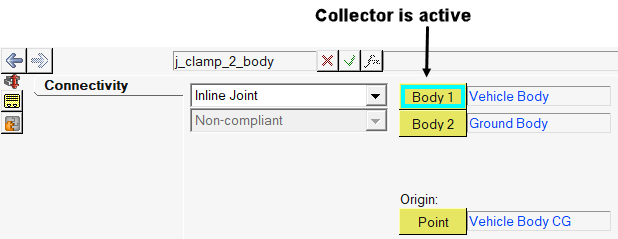
- Picking the entity in the graphics area, if the entity has a graphical
representation.
OR
- Select dialog by clicking again (double-click) on the collector.
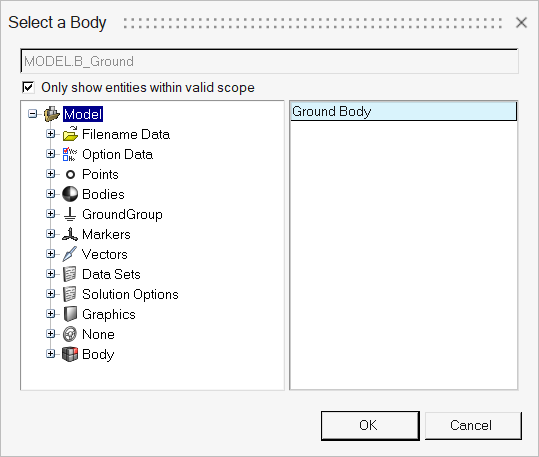
Mouse and Keyboard Controls
| Press | To do this |
|---|---|
| Ctrl+Left mouse | Rotate the model. |
| Ctrl+Right mouse | Pan the model. |
| Ctrl+Scroll wheel | Zoom in/out. |
| 'F’ key | Fit the model to the window. |
Creating a multibody model consists of creating entities such as bodies, points, graphics, joints, force elements and outputs. A CAD geometry can also be used as an input to create bodies and graphics.
Use CAD Geometry
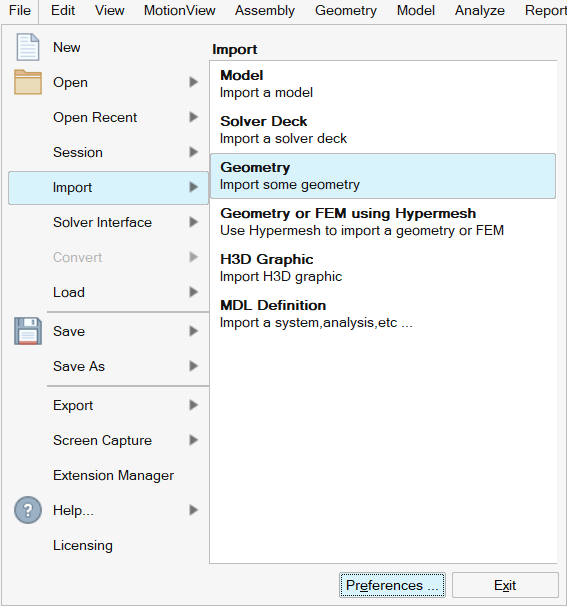
Interact with CAD geometry
MotionView can recognize features in the CADGraphics that may be used to create points and curves needed as reference for other entities.
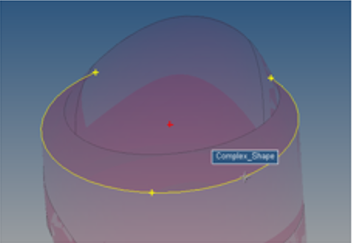
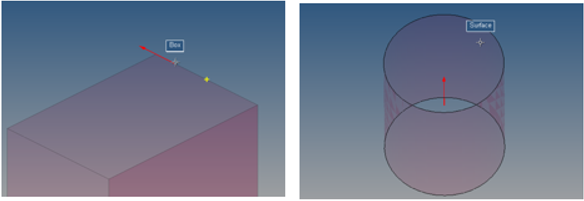
To learn how to save and open models see the Opening and Saving a Model File topic.
Construct a Model
MBD models can be created using one or more of the following techniques:
- Construct a model through the user interface. Entities can be added and deleted and their values set within the MotionView interface. These models can be saved directly from MotionView to an MDL file.
- Edit the MDL files directly. After you construct an MDL model, you can load it into MotionView at a later time for simulation use.
- Assemble a model from the MDL library. A vehicle suspension and dynamics library is installed with MotionView by default which contains simple MDL modules. The library can be expanded or recreated for other mechanism types.
Please note the following about MDL and the MotionView interface:
- A data field can be defined as a parametric data expression. Select any data
field and click
 at the top of the panel.
at the top of the panel. - To create parametric or non-parametric text that is to be exported to the solver input file and is not defined using the MDL language, use the Templex template.
- The full model tree can be viewed by selecting from the View menu.
- To access all model data in one dialog, select Data Summary from the top-right of select panels.
- Select Check Model from the Tools menu before starting a simulation. This ensures that dependencies have been resolved and sets the IDs of the solver input file items.